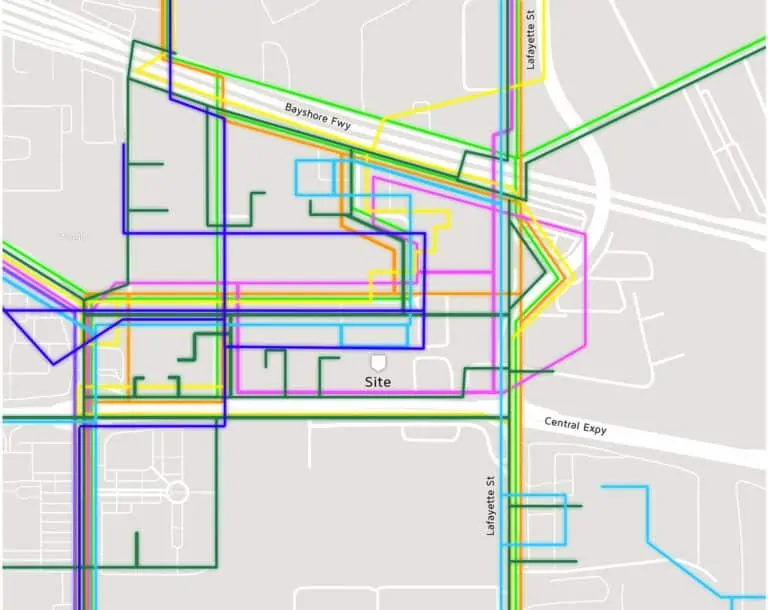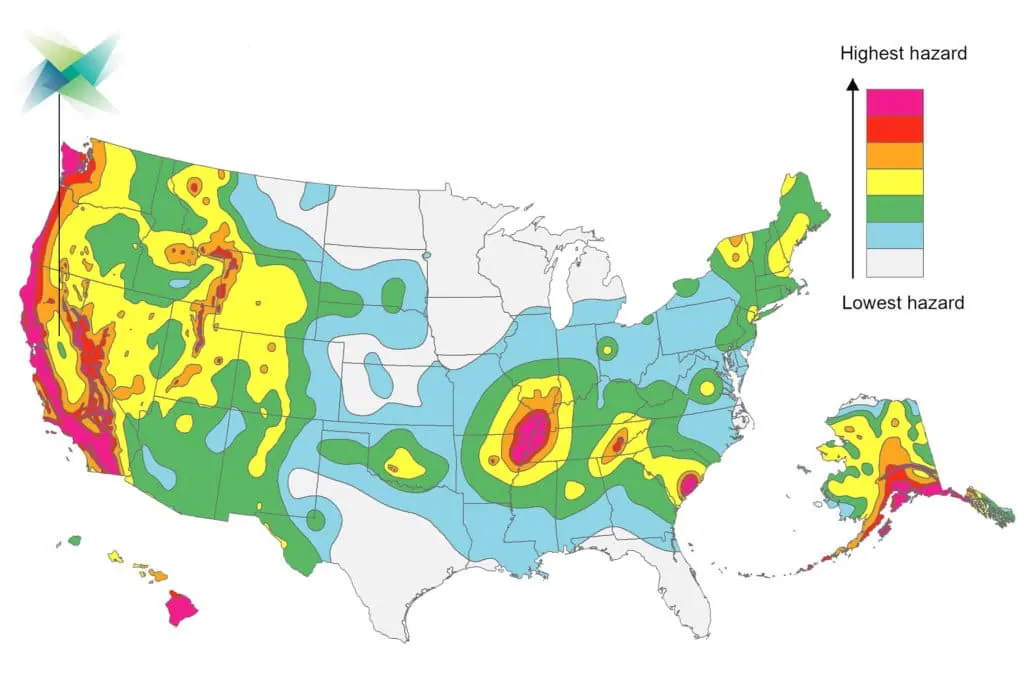Data centers are located in places that meet as much of the following criteria as possible:
-
Good telco connectivity
-
Affordable, sustainable, and reliable electric power
-
Low risk of natural disaster, like earthquake, flood, tornado, fire, etc.
-
Affordable real estate
-
Proximity, low latency to key constituencies/stakeholders
-
Comply with government regulations about where and how user data is stored
We’ll summarize the importance of each of the factors above.
Telco connectivity
Strong telco connectivity is one of the most important data center site selection criteria. Without excellent connectivity, a data center can’t communicate with the outside world, which renders it virtually useless. The connectivity must be both fast and reliable. One contributing factor to the reliability of data center connectivity is whether or not the facility is carrier neutral. Carrier neutrality simply means that the data center is served by multiple service providers.

Affordable electric power
Relatively inexpensive electric power is hugely attractive for data center site selection since electricity is one of the largest operating costs for a data center. It’s critically important to ask yourself why a particular area might have such inexpensive power. Often, it’s because the fuel source is dirty. That’s changing however, as dirty fossil fuels, like coal, are quickly becoming more expensive than renewables.
The other important thing to note is that if a particular utility is behind the adoption curve in increasing the mix of renewables in their fuel mix, they’ve simply put off inevitable capital expenditure. As renewables continue to become more cost-effective and fossil fuels continue to become less cost-effective, utilities that rely too much on fossil fuels (including natural gas) will be forced to finally invest in new renewables generation, storage, and transmission. Those costs will be passed on to the customer in the form of rate hikes. Therefore, it’s often short-sighted for companies to choose data center sites that rely on fossil fuel electricity generation.
Sustainably sourced electric power
This is sometimes inversely related to affordability of power, although not always. Many sites with relatively inexpensive power have a high carbon footprint for generating that power. For example, the Salt Lake City, Utah area and the Reno, Nevada area have several data center sites, but the utilities in both regions also tend to generate a lot of their power from burning coal, which is one of the dirtiest fuel sources.
Data centers in such areas sometimes have the option to enter into custom electricity sourcing agreements with the local utilities in order to guarantee that their facility gets a higher mix of renewables, and therefore a lower carbon footprint. If you are considering locating your data center in an area that gets served by a utility with a high mix of fossil fuels, we highly recommend discussing this with the utility. In Nevada for example, large electricity customers can participate in the Optional Pricing Program Rate (OPPR), which allows them to lock in a predictable long-term fixed rate for renewable-generated electricity, at a significant cost saving each year.
The stigma that sustainable power is expensive is changing quickly. Utilities that have invested proactively in renewables are going to be able to reduce future capital expenditures compared to those utilities that have dragged their feet. That often means that more progressive utilities with higher mixes of renewables will be able to provide less volatile rates in the future. That extra cost predictability will help data center operators.
Read more about data center sustainability certification.
Reliable electric power
Reliability of the electric power is the third electricity-related criterion. Electricity might be both relatively inexpensive and have a relatively low carbon footprint, but might have some supply vulnerabilities. A good example of this is the Portland, Oregon area, which has a high proportion of its electricity coming from hydroelectric generation. That depends on dams, which are quite vulnerable to earthquakes. Since Oregon is a seismically active area, there’s a risk of electric supply disruption to Oregon data centers in the event of a big earthquake.
Read more about data center reliability.
Natural disaster risk
Natural disasters can take a data center offline in a variety of ways. In addition to the Oregon hydroelectric example above, a natural disaster like a flood could pose a double-risk. The immediate risk is that the flood would inundate the data center itself. Even if a flood didn’t damage the data center itself, it might disrupt the electric power supply or the telco connectivity.
For these reasons, it’s very important to select a data center site that has relatively low natural disaster risk, like Sacramento, Northern Virginia, or Dallas.

Affordable real estate
Land costs vary widely. Urban areas tend to be the most expensive and rural areas tend to be the least expensive. Clearly, there’s a cost advantage to putting a new data center on inexpensive land, but often, the tradeoffs outweigh the advantage.
One might wonder why areas with very expensive land, like Silicon Valley, California in the San Francisco Bay Area, remain popular data center sites and why we don’t see more data centers being built in very remote places. One reason is that rural areas tend to have poor telco connectivity and unreliable electric supply.
Another reason is proximity to key stakeholders, which we get into below.
Proximity to key stakeholders
Proximity to stakeholders is important and takes several forms. For one, a data center needs to be close to the audiences it is serving. That has to do with latency. It takes time for data to travel from one place to another. The greater the distance, the longer the time. Certain data center applications require very low latency, which means that they must be located close to their user base. This is one reason why edge computing is such a hot topic in 2020.
Many companies also want their data centers to be close to their IT teams so that they can visit the data center and help manage it. This is where the term “server hugger” comes from. Some companies and IT teams prioritize physical proximity to their data centers very highly. For those companies, it’s worth the extra cost to have their data centers located near their offices. In those instances, we recommend looking for data centers that are within an easy drive and/or near a major airport, but have more affordable real estate. Sacramento is one such example for San Francisco Bay Area companies.
Compliance with government regulations
In an era of increasing government regulation surrounding how our personal data is managed and cared for, companies sometimes feel the need to locate data centers based on the regulatory map. For example, after the EU enacted the General Data Protection Regulation, or “GDPR”, some companies decided to only serve EU customers from EU-based data centers. Data Center Dynamics wrote a great post on how GDPR has affected data center owners.
There was also the recent example of video conferencing software Zoom allowing customers to choose the location of the Zoom data center managing their calls, after the company began to take criticism over using China-based data centers.

Where are Prime Data Centers' facilities located?
Our data centers are located in Sacramento, Hayward, and Santa Clara, California. Why? We selected each of these locations due to varying mixes of how they met this list of criteria. For example, our Sacramento campus scores very highly on each of these criteria, even though many people don’t (yet) associate Sacramento with data center site selection. Sacramento is vulnerable to flooding, but our data center is the only one in the region outside the 500-year flood plain.
we can advise your site selection
Chat with us today and we can advise on your company's data center site selection and consolidation.
Contact Us





